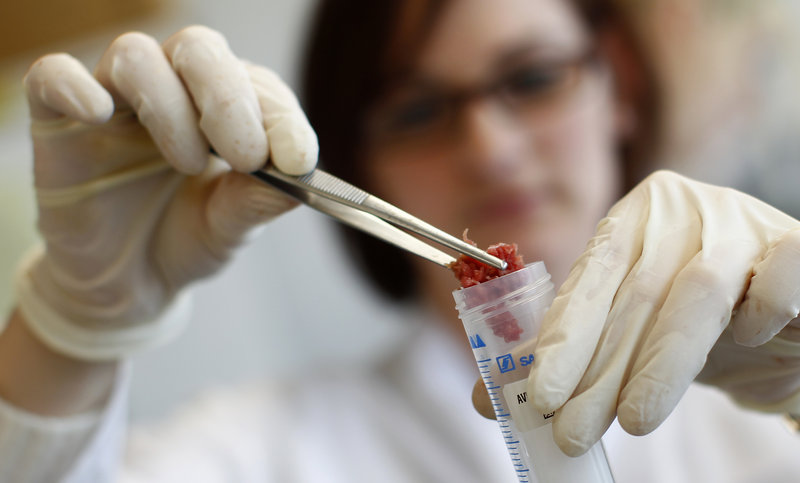WASHINGTON – Regulators have their work cut out in enforcing stricter U.S. food-safety rules set in motion this year, according to new data that show progress in reducing contamination has slowed from about six years ago.
Total cases of foodborne illness were unchanged last year from 2006-2008, stalling from “substantial declines” in earlier years, according to preliminary data Thursday from the Centers for Disease Control and Prevention. Some incidents increased, including a 43 percent jump in vibrio, a bacterial infection often acquired by eating raw oysters.
The Obama administration has been slow to fully enact the 2011 Food Safety Modernization Act, which was supposed to be the most sweeping overhaul of food safety in 70 years. The administration just this year proposed the first major regulations, which Congress called for after poisonings related to cookie dough, spinach, jalapenos and other foods killed at least nine people and sickened more than 700 in 2008 and 2009.
“There’s not a lot of recent progress to talk about,” said Robert Tauxe, deputy director of the Atlanta-based CDC’s division of foodborne, waterborne and environmental diseases, in a telephone interview. “That means there’s more that could be done.”
One of two regulatory proposals made Jan. 4 to carry out the core of the food safety act would give companies one year to develop a formal plan for preventing the causes of food illness. The second would force produce farms with a “high risk” of contamination to develop new hygiene, soil and temperature controls.
“Both of these are important and when they begin to be adopted, we hope that will help,” Tauxe said.
Neither proposal has taken effect, nor have any of the other major provisions of the food safety act. The Obama administration has said additional rules under the law are likely to be revealed later this year.
The CDC report showed there were 19,531 foodborne infections and 4,563 hospitalizations in 2012, with 68 deaths, based on surveillance data from laboratory-confirmed infections at 10 sites in the U.S. The sites are a representative sample that covers 15 percent of the population, or about 48 million people. Many cases of foodborne illness are never diagnosed by physicians.
Salmonella is still the most common foodborne infection even though incidents declined to 7,800 confirmed cases, the CDC said. The bacteria, commonly passed from the feces of chickens or other animals to contaminate water and produce, may lead to diarrhea, fever and abdominal cramps.
Campylobacter, a diarrhea-causing pathogen associated with poultry, raw milk and untreated water, rose 14 percent to the highest level since 2000. There were 6,793 campylobacter cases, and 2,138 for shigella, a condition that may lead to a severe infection in children less than 2 years old, the CDC said.
Copy the Story Link
Send questions/comments to the editors.



Success. Please wait for the page to reload. If the page does not reload within 5 seconds, please refresh the page.
Enter your email and password to access comments.
Hi, to comment on stories you must . This profile is in addition to your subscription and website login.
Already have a commenting profile? .
Invalid username/password.
Please check your email to confirm and complete your registration.
Only subscribers are eligible to post comments. Please subscribe or login first for digital access. Here’s why.
Use the form below to reset your password. When you've submitted your account email, we will send an email with a reset code.